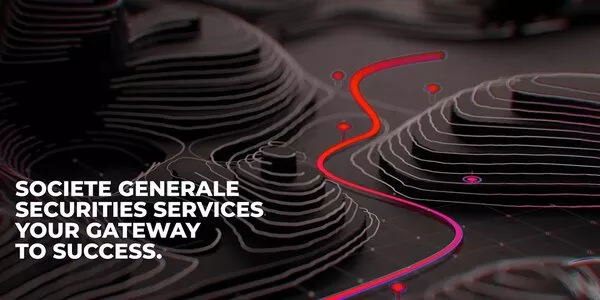
The SPAC is dead, long live the SPAC!
A Special Purpose Acquisition Company (SPAC) is a company formed to raise capital via an IPO to fund the acquisition of one or several targets in specific sectors. It is a powerful financing tool that allows investors to co-invest “publicly”, side-by-side with one or several sponsors. A SPAC has a life span of roughly 2 years. After this time, if successful in securing the right target, it becomes a ‘business combination’, also known as a de-SPAC. If not, it returns the money to the investors and is liquidated.
Originating and hugely popular in the US, the trend has extended to Europe, albeit on a much smaller scale. European SPACs are also subject to slightly different regulatory conditions – a key difference being that SPACs are not offered to retail investors in Europe, though this is permitted in the US.
The concept has existed in the US market in various forms for decades and a revamp of the governing rules and regulations in 2015 has stimulated revived interest. This was particularly evident in 2020 when companies needed to recapitalise and strengthen their balance sheets due to the pandemic and again with the favourable equity capital market conditions in 2021.
This SPAC boom halted when the Securities and Exchange Commission (SEC) issued new proposed rules for SPAC listings on March 30, 2022. While the new rules are still at proposal stage, US market participants dramatically reduced SPAC activity and the number of SPACs launched in 2022 tumbled.
Despite the resulting market “blip”, we think that there is still a lot of potential for SPACs in Europe. To illustrate this, let’s go through how the SPAC market works and why we feel SPACs will continue on this growth trajectory.
What it is and how it works
Main stakeholders
Sponsors are the original founders of a SPAC and the first source of capital to setup the vehicle and search for an investment target. Sponsors have their capital at risk from the outset and are usually well-known entrepreneurs or private equity firms. Blackstone, Apollo, TPG Capital and several other well-known private equity (PE) firms have all acted as sponsors. While the earlier US model often used famous personalities and celebrity sponsors to attract investment in a SPAC, the role of sponsor is now more and more taken by professional firms.
From our experience, a European SPAC has 3 founders on average.
Investors are the subscribers into the SPAC. An important feature here is that investors have the ability to pull out of (or vote against) the proposed initial business combination, thus their capital is not at risk until the target is identified and voted for. Professional investors such as PE or family offices use the opportunity to co-invest with the SPAC, which provides additional comfort to other investors on the quality of the deal.
Investors receive units consisting of a common share and a fraction of a warrant1. Once the IPO has been completed, the proceeds are placed in a trust or escrow account and earn interest. Investors have a right to withdraw at any point before the initial business combination (IBC) is executed, receiving back all of their capital + interest. Warrants can also be de-coupled, i.e. investors can decide to sell the shares but keep the warrants to benefit from the potential upside of the business.
Target – Unlike a typical IPO, targets for SPACS are often late-stage start-ups, some of which have already received early stage venture capital funding. The usual practice is for a SPAC to acquire a single target, but some SPACs may acquire multiple targets. The acquisition is called an initial business combination after which the SPAC is referred to as a de-SPAC.
Below is a schematic of the main stages of the SPAC lifecycle.
Usual timeline of a European SPAC2:
Source: Mazars
Market conditions
US vs Europe
In the US Equity Capital Markets (ECM), issuances set a new record last year, reaching $443 billion, as issuers took advantage of favourable equity marketsto raise capital, primarily tofinance organic growth and M&A activity. The biggest driver of the record year were SPACs, which doubled their issuance from $83 billion in 2020 to $162 billion, reached 610 and were the largest component of the ECM market in 20213.
European market
There were 39 SPAC deals4 in Europe between 2019 and 2022, 32 of which IPO’d in 2021 and 4 in Q1 20225. Two key markets are Euronext Amsterdam and Euronext Paris. Having supported its 5th SPAC IPO last May, Societe Generale is now the most active bank in SPAC listings in Paris.
The four European IPOs in 2022 raised $1.07 billion. At the same time, there were 15 de-SPAC deals involving European targets with a value of $16.09 billion3. It’s worth noting that US SPAC buyers accounted for $13 billion3 of the total deal value, indicating that there is room for more European SPACs.
Notably two of the SPACs in Q1 2022 were listed in the UK, perhaps driven by the revision of the SPAC listing rules by the Financial Conduct Authority (FCA) in July 2021.
Luxembourg, as the “nation of the issuer”, has a prominent place in the European SPAC landscape with 8 SPACs issued between 2019 and 2022, along with other frontrunners like the Netherlands (8) and France (6)3.
What’s in it
We need to remember that a SPAC is simply a tool for realising a particular investment strategy. As with any tool, there are features that make it more or less suitable for a specific situation. This market sector went through significant rapid development in the past three years and is now stabilising and evolving into a more professional and organised setup.
Different types of investors pursue different goals when investing in SPACs. In the US, hedge funds are one of the most active investor groups. They are typically seeking arbitrage opportunities - trading for a “risk-free” profit plus optionality and for upside through warrants but are not planning to stay invested in a de-SPAC. PE/VC on the other hand invest for ownership of the combined operational company. Other investors wish to benefit from a private equity-like investment approach, without locking up their investment for ten years. They are also attracted by the option of an early exit without losing any capital in case they do not like the identified target.
In the US, the SPAC regime gives retail investors access to an open version of a PE investment vehicle. This is not the case in Europe as SPACs can only be sold to professional investors, though they can be available to individual investors on the secondary market.
For those investors looking for PE type exposure, the key to successful investment is the quality of the SPAC and this can be derived from:
Qualifications of the founders / sponsors – Look for sponsors who are highly experienced in the industry that they plan to target and / or have a significant track record in the relevant type of investing (e.g. PE/VC6).
A good example of this is last year’s IPO of VAM Investments SPAC. This SPAC focuses on multiple luxury segments and its sponsor, VAM Investments, is an independent investment firm led by Francesco Trapani, former CEO and shareholder of Bulgari and former Chairman and CEO of LVMH’s Watches and Jewellery Division, and Marco Piana, former director of 3i Group and Fondo Italiano d’Investimento.
Quality of the target for the initial business combination. When the SPAC identifies its target investment, investors should perform their own fundamental analysis to sanity check the investment thesis.
Why we believe in the European SPAC market:
The European market is not directly impacted by SEC rules. Instead, the future of this market will be impacted by the success of existing SPACs
There is potential for the European market to get a boost as more US players are attracted to the European market (80% of the recent de-SPAC deals in Europe were driven by US SPACs)
The SPAC is still the right tool for the right project, for example as an exit strategy for a PE investment
The new SEC rules have the potential to reduce speculation and improve the reputation and quality of SPACs and de-SPACs. This will ultimately stabilise the market.
For investors, in addition to the right to withdraw, SPACs represent a low-risk investment opportunity providing PE type of exposure without locking the liquidity for years.
Veronika Zukova, Head of Product Development PERE, Societe Generale Securities Services Luxembourg
Article published in AGEFI Luxembourg in July 2022.
1 Warrants are speculative derivatives that give the right to buy or sell an asset at a certain price before expiration.
2 The SPAC Stimulation, Mazars
3 Analysis based on data from S&P CapIQ, Dealogic, December 2021.
4 Issues above 100M. Source: White & Case, https://www.whitecase.com/publications/insight/european-spacs-data-hub
5 White & Case, https://www.whitecase.com/publications/insight/european-spacs-data-hub
6 VC : Venture Capital.



